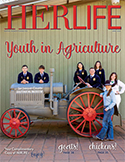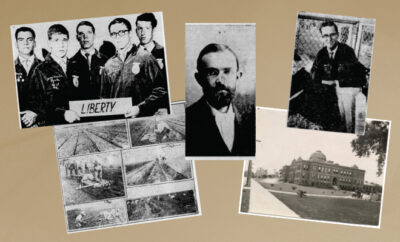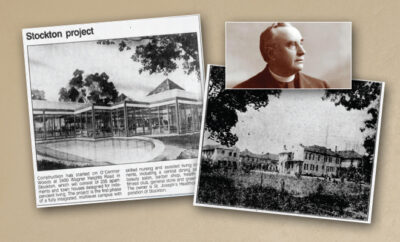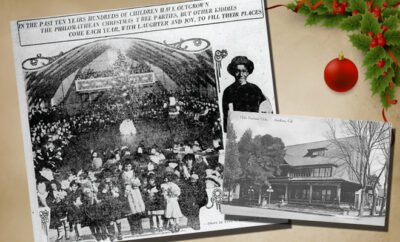
Stockton’s Thanksgivings Past: 100 Years Ago This Month
Photos Courtesy of San Joaquin County Historical Museum and the Stockton Record
In popular American culture, November is deeply rooted to the holiday of Thanksgiving and the concept of gratitude. Celebrated on and off between 1789 and 1863, Thanksgiving became a national holiday at the order of Abraham Lincoln, when the last Thursday in November was proclaimed a day of “Thanksgiving and Praise to our beneficent Father who dwelleth in the Heavens.” A few years later, President Ulysses S. Grant signed into the law the federal Holidays Act. By the 1880s, Thanksgiving had gone national, and the concept of giving thanks, long a religious tradition in various faiths in America, had become part of the fabric of American culture.
For much of its history, Stockton was a major center of Thanksgiving celebrations across the San Joaquin Valley. Due to its central location, a vibrant regional turkey farm industry, numerous department stores and the wealth and size of its churches, from the 1890s through WWII, people from smaller towns and cities from Merced to Elk Grove would visit Stockton the week of Thanksgiving to attend church, buy clothes or turkeys, and visit with loved ones. Between 1892 and the 1930s, local newspapers would routinely report a lack of vacancies at Stockton hotels during Thanksgiving week, and the Stockton Record society page would report scores of social events taking place at every club and society house across town.
The pages of the 1923 Thanksgiving edition of the Record, from 100 years ago, are particularly informative concerning the nature of Thanksgiving celebrations in Stockton’s golden era. Here are some stories from the November 24, 1923:
Tully C. Knowles, president of the College of the Pacific, gave the main address to the Stockton Rotary that year, foreshadowing his institution’s move to Stockton from San Jose the following year, imploring the membership to let go of selfishness in the pursuit of altruism. The Stockton Rotary Club that year had the highest attendance rate of any club in the world, with 100-200 members, and would later spearhead the charge to fund the construction of the College of the Pacific’s new campus north of Stockton. In the society section of the paper, no fewer than 120 parties for Thanksgiving week were announced by clubs, societies, associations and schools. Headlining the celebrations of thanksgiving were two Thanksgiving dinner dances planned by the nine-year-old Stockton Country Club, taking place on the Wednesday and Saturday of Thanksgiving week.
Simultaneously, several singing and dancing clubs, including the regionally famous Ozida Dancing Club, a youth dance group dedicated to formal dance performances, hosted recitals and performances at Stockton’s many theaters and clubs. The social and press committee of the dancers, led by Carsten Grupe, Reginald Gianelli and Dorothy Hindman, were able to market their performance across the San Joaquin Valley, and the performance on Thanksgiving Friday made the Sacramento and Fresno papers.
The philanthropic community, often the spearhead of gratitude in any city, was also greatly engaged in 1923. Led by Dr. Fred Clark, the superintendent of the State Hospital, local churches and community organizations donated or raised funds for 6,000 pounds of pork, 86 turkeys, 500 loaves of bread, 100 dozen heads of celery, 600 pounds of cranberry sauce, 15 gallons of syrup and 1000 pies for a Thanksgiving feast to be given to patients of the Stockton State Hospital; 2,737 patients and staff attended. Meanwhile, the Parent-Teachers Association of Stockton High School held a Thanksgiving fundraiser for the school to fund a trip for all incoming seniors to go on a summer tour of Europe. Truly, the early Stockton community punched above its weight in terms of community giving.
Thanksgiving is a time-honored tradition in San Joaquin County and Stockton, and it’s worth remembering that generations of people before us have taken time to give thanks to others.










